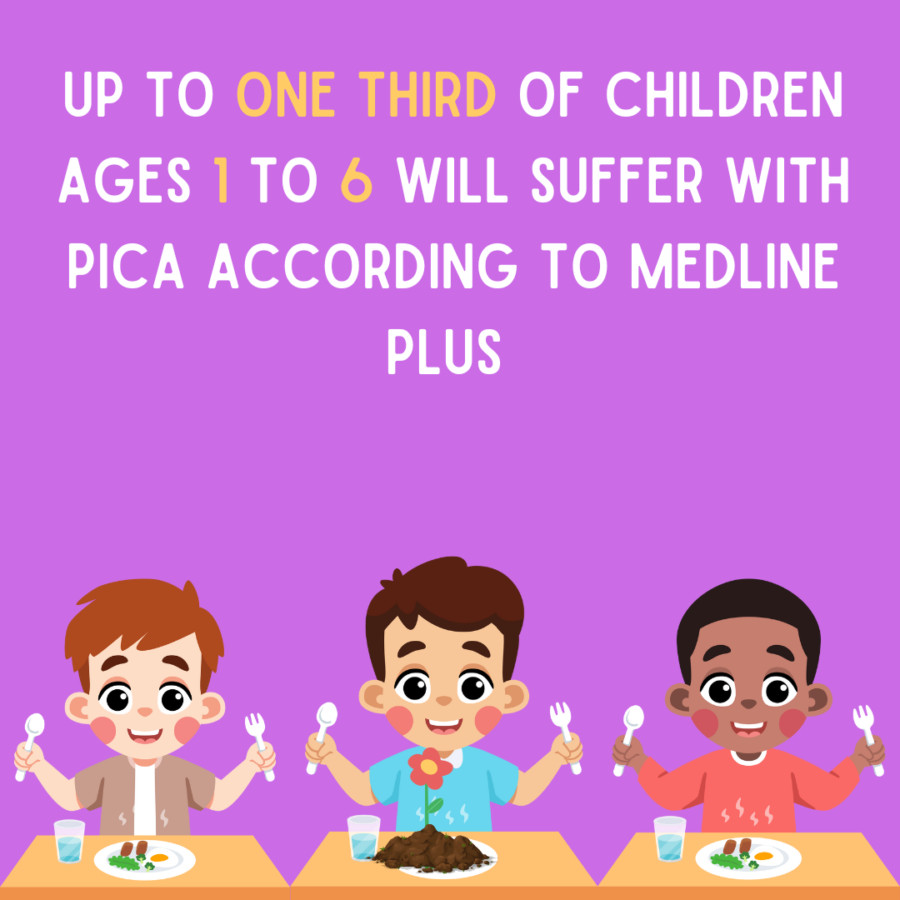The dirt on Pica
February 24, 2023
Pica (PIE-kuh) is a mental health condition and eating disorder where a person uncontrollably and compulsively swallows nonedible food items. Pica is most common in children with certain mental or physical conditions.
In Latin, pica refers to the magpie, a bird well known for eating anything and everything, edible and inedible.
While this condition can usually be harmless, swallowing certain non-food items can become extremely hazardous.
Pica is an eating disorder and is treatable with therapy and modification to lifestyle and circumstances. Often specific treatments will start with a behavioral analysis to try and find the underlying cause.
Pica is not just common in children, other people this disorder may affect are pregnant people, people with mental disabilities and compulsive eaters. Pica can affect children, adolescents, and adults of any race, ethnicity, and sex. This eating disorder can also be found in animals like cats and dogs.
According to the Clevland Clinic, pica can be a result of stress or anxiety, negative conditions during childhood, mental health conditions and medical conditions.
Certain medications can also increase the risk of someone developing pica or similar behaviors like oral fixations.
The most common craving substances are items that do not offer any nutritional value, which include substances such as ice, clay, paper or even soil. Cravings tend to differ based on age and availability of items.
Young kids often put non-food items (like grass or toys) in their mouths because they are curious about the world around them, and it aids as a way of exploration. Normally most kids will grow out of this experimental stage, but the ones who do not often will struggle with pica for the entirety of their life.
Pica can have causes that are not due to underlying disease. Examples of these causes include stress, cultural factors, nutrition and deficiencies.
Pica is common in pregnant women; this is because their body has an increase in nutritional needs during pregnancy. An example of this could be a lack of iron, which is followed by a craving for ice.
Helen Jones, a famous Tik Tok influencer, openly talks about her struggles with pica. Jones often eats salt daily to cure her fixation for sand; she said she frequently caves and will end up snacking on her sand in a shoebox.
The 2019 film “Swallow” follows a young woman who was emotionally stifled in her marriage and domestic life. She develops a strong urge to eat inedible objects due to the stress from her marital issues.
Films are one of the most effective ways to reach society and create a different perspective on topics that are not typically talked about.
James Frankish was a young autistic man who sadly lost his life at the age of 21 to an extreme case of pica. The official cause of his death was “obstruction of his airway and/or cardiac arrest,” according to HM Coroner.
In addition, this factor was named by the coroner as resulting from James vomiting up plant material that he had eaten at an unspecified point prior to his death.
The result of James’s compulsive habit of eating plants, particularly conifer leaves lead to his death.
A more recent case was a 44-year-old man who was brought to the emergency department following severe abdominal pain, but died before he could even be admitted or receive any type of treatment. On the autopsy the coroner found 64 bolts and other metal fittings, 3700 grams (about 8.16 lb.) of metal were found in the esophagus, stomach, small intestine, and large intestine of the man.
TLC released “My strange addiction” in 2010. This show highlighted the extreme side of pica.
Some of the more memorable episodes were about the girl who liked “the crunch” of sand or the girl who ate her own and other people’s hair. And the older lady who loved to drink paint because it felt like “a thicker version of warm milk.”







